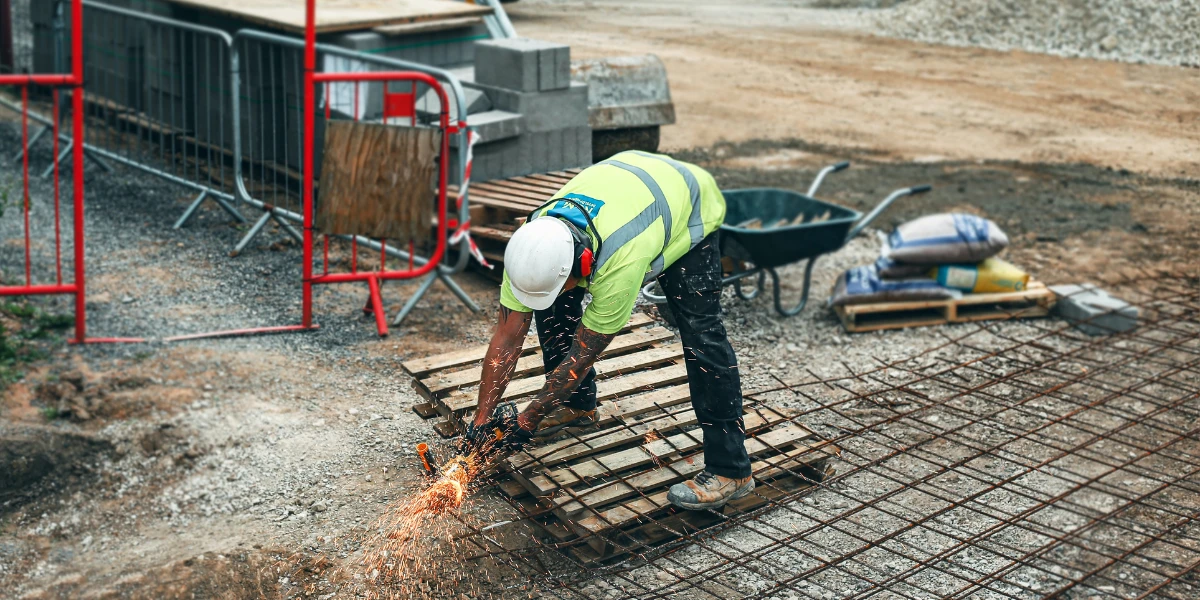In any situation or sector, efficient communication and information exchange is key. This is especially true in the construction industry, where clear two-way communication lines are critical to the success of any project. You may have heard the term RFI (Request For Information) before, but what does RFI stand for in construction specifically?

What Is an RFI in Construction?
Put simply, the RFI construction meaning: An RFI is a formal document used to collect crucial information, resolve uncertainties, and ensure that all project stakeholders have a shared understanding. Ultimately clarifying all necessary details around the project and contributing to its success.
Although anyone in the construction industry can issue RFIs to any other party, including clients, project owners, consultants, and government authorities, the most common issuers of RFIs are the contractors, with clients typically responding to construction RFI requests.
RFIs can come into play at various stages of the construction process, including the preconstruction and bidding phase. In general, RFI requests occur at the beginning of the construction process. This is to clear up any uncertainties prior to breaking the ground and starting the construction.
Understanding the RFI Process in Construction Projects
RFIs in construction involve a series of steps to ensure the effective exchange of information and to address issues or uncertainties promptly:
- Raising the RFI: The process begins when a member of the project team, often a general contractor, subcontractor, or project manager, identifies an issue or needs clarification on a specific aspect of the project. They create an RFI document outlining the issue, its context, and the required information.
- Submission: The RFI is then formally submitted to the party responsible for responding, which could be the client, architect, engineer, or other stakeholders. The submission can be electronic or in physical form, depending on the project's documentation procedures.
- Review: The party receiving the RFI reviews the document, assesses the requested information, and if necessary, consults with relevant team members to provide accurate and comprehensive responses.
- Response: A detailed RFI response is prepared and sent back to the submitter of the RFI. This response should provide the requested information, clarification, or guidance to resolve the issue.
- Distribution: The response is not only shared with the submitter but also typically distributed to all relevant parties involved in the project to ensure everyone is informed.
- Documentation: The RFI and its response are documented and archived to maintain a record of project communications and decisions.
- Resolution: The RFI submitter reviews the response and determines if the issue or question has been satisfactorily addressed. Further discussion may be needed to reach a resolution.
What to Include in an RFI
The purpose of an RFI is to seek information and clarify things. Therefore, it’s important that the RFI is well-structured to avoid any confusion. These are some important pieces of information that most construction RFIs include:
|
Project name, description, address, and any other identifying information |
|
Requesting party’s contact person and company name |
|
Responding party’s contact person and company name |
|
RFI Number |
|
The title of the RFI |
|
A detailed description of the request (RFI) |
|
Important dates, such as date of submission and deadline for response |
|
Additional space for the responding party’s response and response date |
|
A brief explanation about the attachments, such as images, screen captures, invoices, etc. |
The Importance of RFIs in the Early Stages of a Construction Project
RFIs are vital in the early stages of construction projects for three main reasons. Firstly, they help identify and address issues early, preventing costly mistakes and delays.
Secondly, RFIs ensure adherence to project plans and specifications, maintaining quality and consistency. Thirdly, RFIs serve as crucial documentation for risk management and potential dispute resolution, particularly in complex projects, and add to the clarity provided by construction contracts, often informing what parameters are placed into a contract.
The Difference Between RFI vs. RFQ vs. RFP: Objectives in Construction
It's essential to understand the differences between RFI, RFP, and RFQ in construction, as despite being very similar terms, they each serve distinct purposes in construction projects:
- RFI (Request for Information): The primary objective of an RFI is to seek information, clarification, or guidance on specific aspects of a project. It does not typically involve price quotations or bids. RFIs are meant to gather information and are often issued in the early planning and design stages of a project.
- RFP (Request for Proposal): An RFP is a solicitation document used to invite potential contractors or vendors to submit proposals for a project. It includes detailed project specifications, requirements, and sometimes design concepts. The primary goal of an RFP is to solicit competitive bids for a project.
- RFQ (Request for Quotation): An RFQ is a request for a price quotation. It is used when the project's specifications are well-defined, and the focus is solely on the cost of materials or services. RFQs are typically used in the procurement phase of a project.
The distinction between a request for information vs request for proposal in construction is vital, as they practically serve the opposite purpose to each other - the first for contractors to gain more information about a project, and the second for clients to gain information on how a contractor intends to execute a project should they win the bid.

Does an RFI Lead Directly to an RFP or RFQ?
RFIs, in most cases, do not lead directly to RFPs or RFQs. While RFIs focus on gathering information and resolving uncertainties, RFPs and RFQs have different objectives, primarily related to procurement and competitive bidding.
However, the information gathered through RFIs can support the preparation of RFPs or RFQs.
For example, the information and clarification obtained through RFIs can help contractors or owners refine their project requirements and specifications, which can then be included in RFPs or RFQs. So, while RFIs don't directly lead to RFPs or RFQs, they play a valuable role in shaping the subsequent stages of a construction project.
How to Write a Standout RFI
In competitive construction projects, standing out with your RFI submissions can make a significant difference. Here are some tips to ensure your RFIs get the attention they deserve:
- Clarity: Be precise and concise in your RFI. Clearly state the issue or question and provide context to help the recipient understand the problem.
- Relevance: Ensure your RFI is relevant to the project and that the information you seek is essential. Avoid raising unnecessary RFIs that may clog the communication channel and cause potential bottlenecks.
- Documentation: Include relevant project documents, drawings, or specifications to support your request for information.
- Professionalism: Maintain a professional tone and format in your RFI. Follow the project's communication protocols and procedures.
- Follow-up: If you don't receive a response within a reasonable time frame, follow up politely to ensure your RFI is not overlooked.
- Collaboration: When appropriate, encourage open communication and collaboration to resolve issues efficiently.
The Importance of Clear Documentation and Communication
In the construction industry, documentation requirements and effective communication techniques are key in every aspect, including RFIs.
Legally speaking, there are no RFI construction documentation requirements, however, a contractor should make sure to include all relevant project documents, drawings, and specifications, which provide context and support for the inquiry, serving as a historical record of the project communications.
How to Respond to an RFI
It’s a common occurrence for RFIs to be submitted. This means that responding to RFIs is equally common, highlighting the importance of having an efficient process for managing them.
When preparing your RFI response there are some steps to follow to ensure that you effectively address the RFI's inquiries:
- Understand the RFI
- Carefully read and comprehend the RFI document to grasp the specific information requested. Unfortunately, many RFIs are returned to the submitter before a question is appropriately answered, mainly because the RFI was not entirely understood. Take your time to carefully review the RFI and any supporting documents prior to writing the RFI response.
- Provide clear and concise responses
- Organize your answers logically, use headings or lists, and address each question or topic individually. Try not to provide unnecessary information that’s not directly related to the query. Failing to give a complete RFI response will usually lead to the submitter returning the RFI.
- If necessary, involve others
- Some questions may be beyond your scope, so make sure to bring in any team members who can support you in questions that require special attention.
- Follow instructions
- Adhere to any formatting and submission instructions provided in the RFI document. Equally important is to respect any confidentiality of the gathered information.
- Review, proofread, and follow up
- Ensure your response is error-free, and after submission, confirm receipt and express continued interest in the project to keep transparency.
Consequences of Ignoring or Overlooking RFIs in Construction
Aside from being bad business etiquette, ignoring or overlooking RFIs in construction can have severe consequences.
The most severe repercussion is miscommunication, which causes delays, cost overruns, quality issues, potential legal disputes, and strained relationships among project stakeholders.
To help ensure RFIs and RFQs are never overlooked, many contractors use software tools for managing construction RFIs and RFQs, with some of the best construction scheduling software helping contractors keep track of important documents such as RFIs.
If you’re looking for a solution to help enhance your business and save you time, you might want to consider Buildbite: the comprehensive app for efficient task management.
Increase profits and free up 12 hours a week using Buildbite, utilizing its simple and effective documentation tracking, communication channels, and task management software. Whether you need to free up admin time from keeping track of documents like RFIs or eliminate possible areas of project failure, you can start a free trial with Buildbite today!




.jpg)






